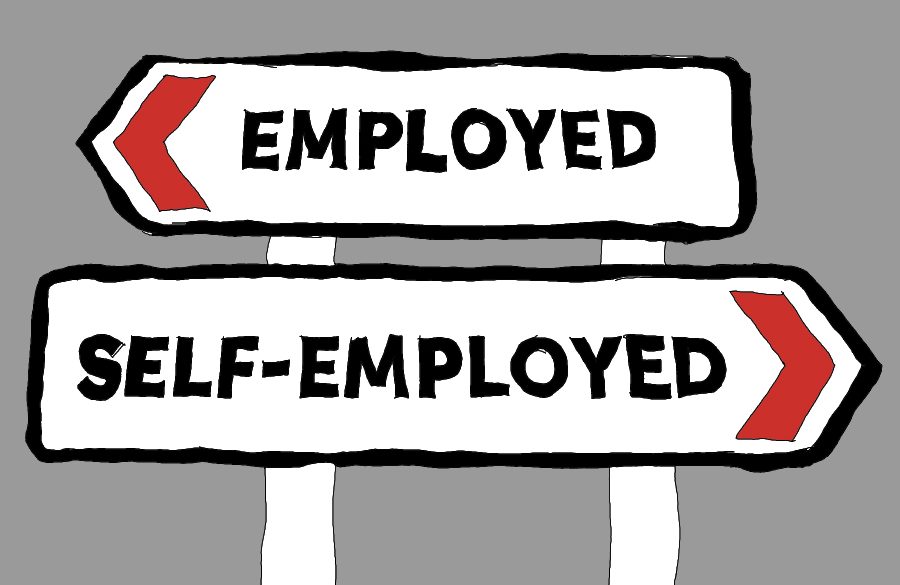Self-Employed vs Employed in the Trades Industry

The skilled trades industry in the UK offers ample opportunities for qualified professionals, with growing demand across plumbing, electrical work, carpentry, and more. One of the biggest decisions that tradespeople face is choosing between self-employment and working as an employee. Both paths come with distinct advantages and challenges, and the best option will depend on personal goals, lifestyle preferences, and career aspirations. Here’s a breakdown of the pros and cons of each to help you make an informed decision.
Self-Employment in the Trades: Pros and Cons
Many tradespeople are drawn to self-employment for the freedom and flexibility it offers. Let’s dive into the benefits and drawbacks.
Pros of Self-Employment
Flexibility and Independence
Self-employed tradespeople have the freedom to set their own hours, choose projects, and work with clients they prefer. This level of control allows you to create a work-life balance that suits your needs.
Higher Earnings Potential
As a self-employed tradesperson, you set your rates and can increase them as your skills and reputation grow. Working on multiple projects and managing your own business can lead to higher income, especially if you develop a niche specialty.
Direct Client Relationships
Building a client base and cultivating long-term relationships can be rewarding and profitable. These connections can lead to repeat business and positive referrals, a significant advantage in the trades industry.
Tax Deductions and Business Expenses
Self-employed individuals can deduct many business-related expenses, from tools and equipment to travel costs and office space. These deductions help offset expenses and can lead to a lower tax liability.
Cons of Self-Employment
Irregular Income
Without a fixed salary, income can vary month-to-month depending on demand, season, and project availability. This can make financial planning challenging, particularly for those new to self-employment.
Responsibility for Business Administration
Running a business means handling all the admin work, including invoicing, marketing, and accounting. Managing these aspects can be time-consuming, especially if you’re a one-person operation.
Lack of Job Security
Self-employed tradespeople rely on a steady stream of clients to maintain their income. Economic downturns or seasonal lulls can result in fewer jobs, making self-employment a more precarious option than traditional employment.
No Employer Benefits
Unlike employed tradespeople, self-employed individuals don’t receive paid holidays, sick leave, or pension contributions. These benefits must be self-funded, requiring additional financial planning and saving.
Employed in the Trades: Pros and Cons
For those who prefer a stable income and structured work environment, working as an employed tradesperson can be highly beneficial. Here’s a look at the upsides and downsides of traditional employment in the trades industry.
Pros of Employment
Steady Income and Job Security
One of the main advantages of being employed is the guaranteed income. You’ll receive a fixed salary or hourly wage, which offers financial stability and allows for more straightforward budgeting and planning.
Employee Benefits
Employers often provide benefits like paid holidays, sick leave, pension contributions, and health insurance. These benefits can be invaluable, offering a safety net in case of illness or other unforeseen circumstances.
Fewer Administrative Duties
Employed tradespeople don’t have to worry about managing invoicing, marketing, or scheduling. The company handles most administrative tasks, allowing you to focus solely on the technical side of the job.
Training and Career Development
Many employers offer ongoing training, certifications, and opportunities for career advancement. For tradespeople aiming to upskill or move into supervisory roles, employment provides structured pathways for growth.
Cons of Employment
Limited Control Over Work Schedule
Employed tradespeople typically have less control over their working hours and may be required to work specific shifts or be on call. This lack of flexibility can be challenging for those who prefer autonomy.
Earning Potential May Be Lower
Employed tradespeople earn a fixed salary, which may be lower than the earnings potential of a self-employed individual. Opportunities for overtime can help increase income, but overall, the earning potential is generally capped.
Limited Choice of Projects
As an employee, you may not have control over which projects you work on. This lack of choice can be limiting, particularly for tradespeople who enjoy variety or prefer to specialise in a niche area.
Potential for Less Independence
Employed tradespeople often work under supervision, with less autonomy in their work. For those who prefer working independently and making their own decisions, this can be a drawback.
Which Path is Right for You?
Choosing between self-employment and employment in the trades industry depends largely on your goals, lifestyle, and tolerance for risk. Here are some key factors to consider:
- Financial Stability vs. Earning Potential: If you value a steady income and security, employment may be a better fit. However, if you’re motivated by higher earning potential and willing to navigate financial ups and downs, self-employment could be rewarding.
- Independence vs. Support: Self-employment offers freedom but requires self-sufficiency. Employment provides support and structure, which is ideal if you prefer focusing solely on your craft.
- Work-Life Balance: Self-employed tradespeople have more control over their schedules but may end up working long hours to meet client needs. Employed tradespeople have set hours but may have less flexibility.
Conclusion
Both self-employment and employment in the trades industry come with their own sets of benefits and challenges. Self-employment offers the freedom to grow your own business, work directly with clients, and potentially earn more, but it also comes with financial uncertainty and administrative duties. Employment provides stability, benefits, and support but may offer less flexibility and earning potential.
At ERR, we offer training programmes designed to equip you with the skills to succeed, whether you decide to work for yourself or with an employer. We understand the unique demands of both pathways and provide guidance to help you build a fulfilling and prosperous career in the trades industry.